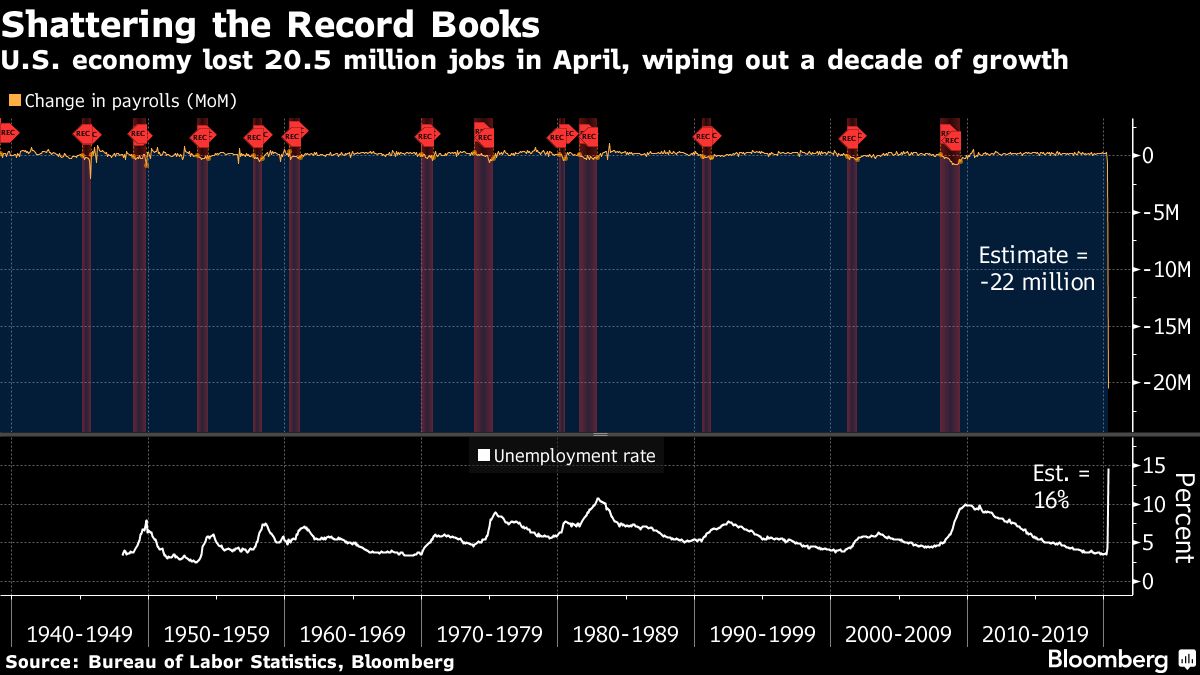Millions of virus-idled American workers are now at home with little more than hand-wringing anxiety about where their next paycheck will come from. They are Jerome Powell's biggest worry, and how to ease their plight with monetary policy is the Federal Reserve chairman's largest challenge.
The Fed will probably debate using instruments including stronger forward guidance or asset purchases when officials meet next month, which would add more muscle to interest rates that have already been slashed to zero.
But those tools require officials to have a forecast they trust of where the economy is heading. The lack of clarity could be a reason to dial down expectations that they would take such steps in June, because officials will struggle to form an outlook as the nation slowly reopens.
Policymakers have already described the difficulties that forecasters face.

Fed vice chairman Richard Clarida warned of "enormous uncertainty" in a CNBC interview and said, "We have to be appropriately humble as we're navigating this period." San Francisco Fed President Mary Daly told Bloomberg Television that forecasting "has become very tough" now because it depends on the course of the virus. Philadelphia's Patrick Harker described scenarios, including one with a second infection wave and "a painful economic contraction of GDP in 2021 as shutdowns are reintroduced."
Even so, Powell has said that the Fed will do what it can to curb the human tragedy of the virus's economic harm.
He helped nurture the longest U.S. expansion on record, a period of growth that was just starting to reach the most marginalized workers, from people with criminal records to those with little schooling.
The Fed chief spent the last year on a listening tour to hear from ordinary Americans and discuss obstacles to even bigger gains.
He's now pledged to use Fed powers to the "absolute limit" to prevent the contraction from leaving deep scars on the economy's long-term ability to grow—through bankruptcies of small businesses or deterioration in worker skills. And he is boldly urging Congress to do more.
"It is about not just winning the war against a depression, but it's about securing the peace, winning the peace. We failed in 2008–09 to secure the peace," Mohamed El-Erian, a Bloomberg columnist and chief economic adviser to Allianz SE, told Bloomberg Television Friday. "We won the war against a threat of depression then, but we did not secure a peace of higher growth, more inclusive growth, and sustainability."
In an April 29 press conference, Powell was asked if he's troubled by the prospect that the downturn does the most harm to Americans who have only just managed to get a foothold in the labor market. "That's exactly what I worry about," he said.
Record Unemployment, Fed Looking for Tools Outside Rate Reduction
U.S. government data on Friday shows the nation headed in that direction. Employers cut 20.5 million jobs in April, and the unemployment rate more than tripled, to 14.7 percent, the harshest labor market downturn in the history of the data series. All indications point to a brutal recession. The central bank wants to make sure it is as short as possible.
Fed officials next month are due to refresh their quarterly Summary of Economic Projections, where all 17 anonymously write down a forecast for their policy interest rate, gross domestic product (GDP), inflation, and unemployment. They skipped the process in March due to a rapidly changing outlook.
With so many puzzles yet to be resolved, they may diminish its importance or skip it again at their next meeting, June 9 and 10.
Officials have already assured investors that interest rates will be held near zero until they are confident the economy is back on track to achieve their twin goals of full employment and 2 percent inflation.
Traders have priced in zero rates for the rest of the year, and possibly even negative interest rates in 2021, an idea that Powell has dismissed in the past and which other officials played down last week as a prospect in the United States.
With rates already at zero, "the second tool," said Daly, "has been forward guidance," and then balance sheet policies. Still, there is a sense at the Fed that monetary policy will have to be complimented with further creative fiscal policy to help push demand higher.
Fed officials have worked with the U.S. Treasury and Congress to provide bridge credit to everything from Main Street businesses to the largest corporations.
"Will there be a need to do more though?" Powell asked at his April 29 press conference. "I would say that it may well be the case that the economy will need more support from all of us if the recovery is to be a robust one."
—With assistance from Rich Miller and Christopher Condon
© 2025 ALM Global, LLC, All Rights Reserved. Request academic re-use from www.copyright.com. All other uses, submit a request to [email protected]. For more information visit Asset & Logo Licensing.





